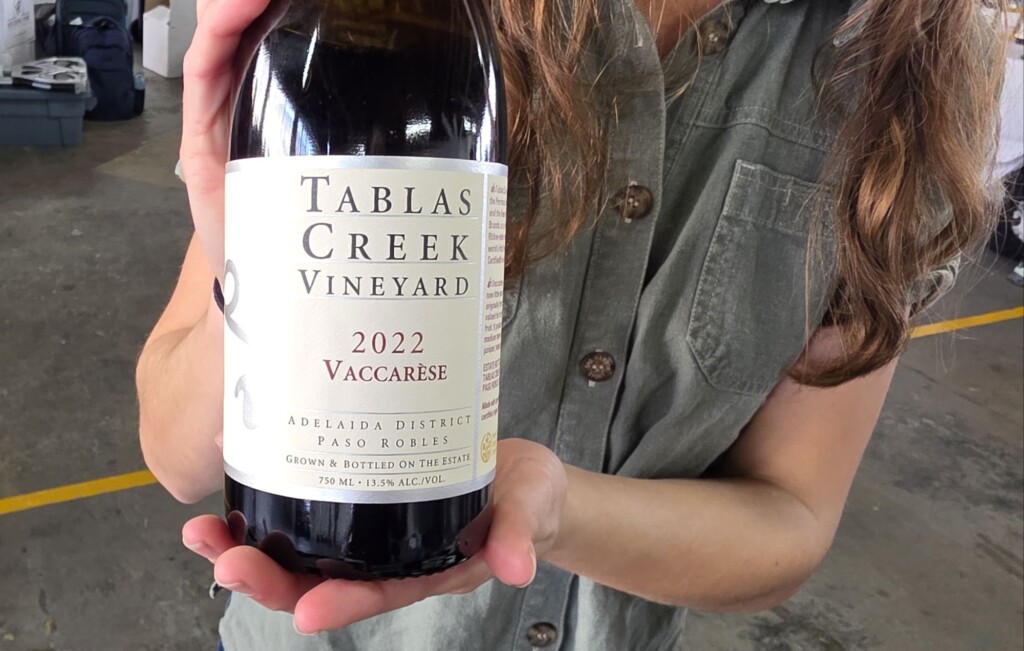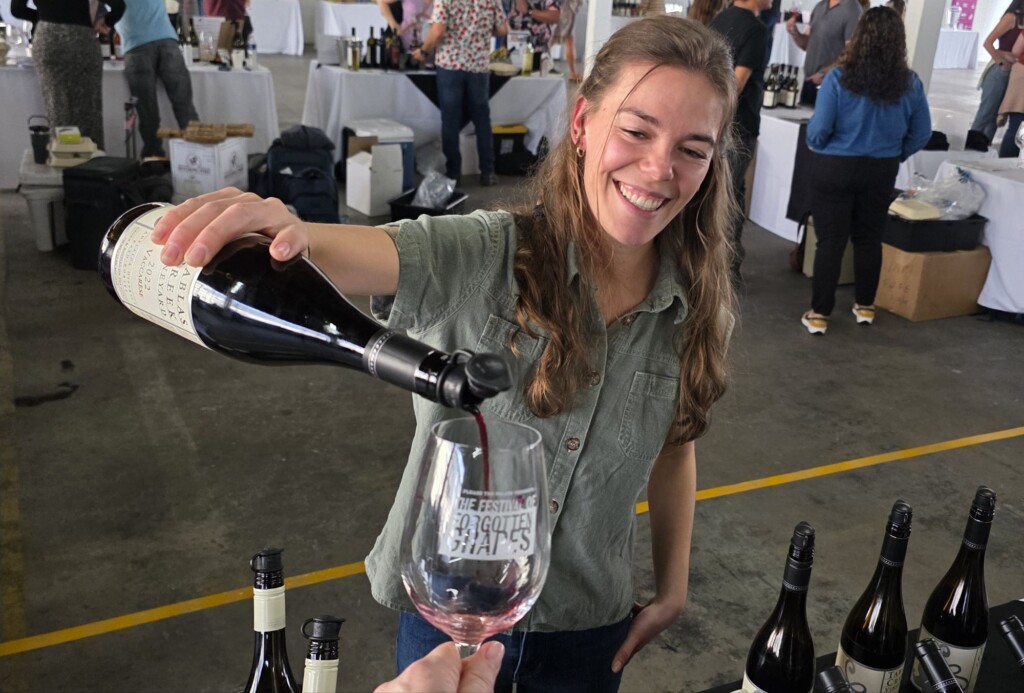
02 Apr Please The Palate Wine of the Week: Tablas Creek 2022 Vaccarèse, Adelaida District, Paso Robles
There are hundreds upon hundreds of unique grape varieties. In California, 93% of what is planted, is planted to 9 primary grapes. More than 100 other grape varieties make up the remaining 7%. At this past week’s Festival of Forgotten Grapes (an event I created and organized), we featured 96 unique grape varieties. Of all the wines poured, there was one grape I had never tried before. It was the Tablas Creek 2022 Vaccarèse, Adelaida District, Paso Robles, the Please The Palate wine of the week.

About Tablas Creek Winery and Vaccarèse
If you are a frequent visitor to Paso Robles or a fan of Rhone grape varieties, you know Tablas Creek. Formed as a partnership between importer Robert Haas and the Perrin family of Château de Beaucastel in Châteauneuf du Pape, Tablas Creek is one of the pioneers of the California Rhone wine movement. They started in 1994 with new cuttings from Châteauneuf du Pape, with the main Rhone grapes: Grenache, Syrah, Mourvedre, Counoise, Roussanne, Marsanne, Viognier, and Grenache Blanc. And, over the last 30 years, they added more varieties, such as Picpoul, Picardan, Clairette Blanche. When I had lunch with Jason in 2019 as Tablas Creek was celebrating their 30th anniversary, Jason told me they had three new varieties coming: Cinsault, Bourboulenc (the first Central Coast planting), and Vaccarèse.
Vaccarèse, a dark-skinned grape, is one of the 13 red grape varieties permitted in the Châteauneuf-du-Pape blend. However, there is so little planted (30 acres as of 2016) in France’s Rhône Valley that it is rarely used in a Châteauneuf-du-Pape blend. The grape is scarce in France but Tablas Creek was able to propagate vines from budwood cuttings from the Château de Beaucastel estate and were the first to plant it outside of France. Tablas Creek planted two-thirds of an acre of Vaccarès in their Regenerative Organic Certified™ and biodynamic estate vineyard. Tablas Creek saw so much potential in the grape, it has been part of the Esprit de Tablas blend the last three vintages. But Tablas Creek has also made varietal bottlings of Vaccarèse in 2019, 2020, and now 2022.
Tasting Notes
The Vaccarèse grapes were destemmed and fermented on the skins for two weeks, with twice-daily punch downs. Fermentation was completed with only native yeasts. After fermentation, the berries were pressed and then combined with the free-run juice into neutral oak barrels and aged there on its lees until bottling. The wine is a deep red color. On the nose, the wine had aromas of dark fruits, leather, dried herbs, and spice. On the palate, the wine is medium-bodied and sits somewhere between Grenache and Syrah. The wine has tannins with very bright acidity and a long finish.
Food Pairing
Tablas Creek recommends paring this wine with dried sausages, salty cheeses, Santa Barbara tri tip, and Coq au vin. On the Tablas Creek website, you can find recipe suggestions for Braised Short Ribs with Tamarind and Winter Root Vegetable and Farro Risotto with Spiced Duck Leg Confit.
Where To Purchase
There were 147 cases produced of the 2022 Vaccarèse, which retails for $40. You can purchase it directly from the Tablas Creek website but are limited to only three bottles.
Meet The Winemaker
Meet Jason Haas and get to know him in 30 questions on the Wine Soundtrack USA podcast.
Discover more from Please The Palate
Subscribe to get the latest posts sent to your email.



